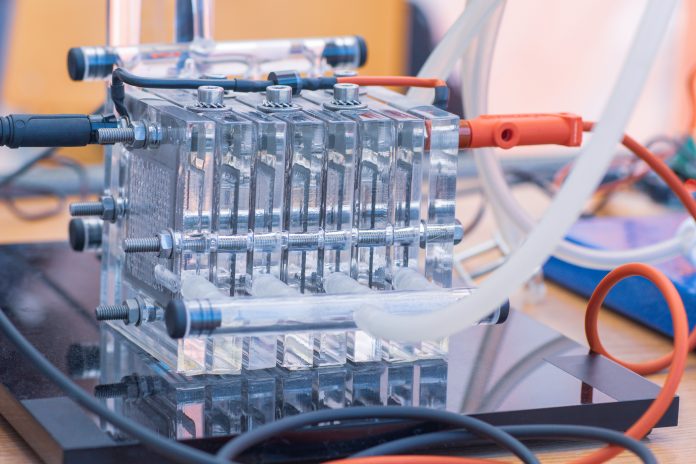Researchers use hydrogen fuel cells for carbon capture, bringing environmentally friendly fuel cells to transportation and technology
The technology can effectively capture 99% of carbon dioxide from air using a novel electrochemical system powered by hydrogen, by converting fuel chemical energy directly into electricity.
Fuel cells can be used in transportation for things like hybrid or zero-emission vehicles, by controlling the short-circuited fuel cell through hydrogen.
The engineers from the University of Delaware had been looking to improve hydroxide exchange membrane (HEM) fuel cells, in an economical and environmentally friendly alternative to traditional acid-based fuel cells which is currently used in the market today.
Renovating former technology to suit modern standards
Published in the journal Nature Energy, the scientists highlighted their shortcomings with former fuel cells – such as HEM fuel cells – which they set out to build upon in their new technology.
As HEM fuel cells are extremely sensitive to carbon dioxide in the air, the carbon dioxide makes it hard for a HEM fuel cell to breathe. Scientists noted that this defect quickly reduces the fuel cell’s performance and efficiency by up to 20%, establishing that the fuel cell was actually no better than a gasoline engine.
However, recognising this default as a solution, the researchers set out to establish technology to stimulate carbon dioxide removal.
Though this isn’t necessarily good for the fuel cell, the researchers had this built-in “self-purging” process in a separate device upstream from the fuel cell stack, so they were able to later turn it into a carbon dioxide separator.
Yan, Henry Belin du Pont Chair of Chemical and Biomolecular Engineering, said: “It turns out our approach is very effective. We can capture 99% of the carbon dioxide out of the air in one pass if we have the right design and right configuration.”
Brian Setzler, assistant professor for research in chemical and biomolecular engineering and paper co-author, added: “Once we dug into the mechanism, we realized the fuel cells were capturing just about every bit of carbon dioxide that came into them, and they were really good at separating it to the other side.”
Filtering more carbon dioxide than before
Their process began with embedding the power source for the electrochemical technology inside the separation membrane – involving internally short-circuiting the device.
With their electrochemical device, which looked like a normal filtration membrane made for separating out gases, they realised it had the capability to constantly pick up minute amounts of carbon dioxide from the air like a more complicated electrochemical system.
So, they embedded the device’s wires inside the membrane to create a short-cut, simplifying for process for the carbon dioxide particles to travel from one side to the other.
The team then constructed a compact, spiral module with a large surface area in a small volume – essentially making a smaller package capable of filtering greater quantities of air at a time, making it both effective and cost-effective for fuel cell applications.
Additionally, fewer components need less cost to manufacture and run, and they also provide a way to easily scale up for the market.
From their research, they found that an electrochemical cell measuring 2 inches by 2 inches could always remove about 99% of the carbon dioxide found in air flowing at a rate of approximately two litres per minute.
Ready to be developed for other methods of transportation
An early prototype spiral device about the size of a 12-ounce soda can already filter 10 litres of air per minute and scrubbing out 98% of the carbon dioxide. Roughly the size of a gallon of milk, the device could be used to remove carbon dioxide from many places.
Finally, the device could enable lighter, more efficient carbon dioxide removal devices in spacecraft or submarines, where they rely on ongoing filtration.
Lin Shi, a doctoral candidate in the Yan group and the paper’s lead author, stated: “It’s risky, but we managed to control this short-circuited fuel cell by hydrogen. And by using this internal electrically shorted membrane, we were able to get rid of the bulky components, such as bipolar plates, current collectors or any electrical wires typically found in a fuel cell stack.”
Setzler finalised: “We have some ideas for a long-term roadmap that can really help us get there.”
The researchers highlighted that the electrochemical system is powered by hydrogen. With the development and outreach of the hydrogen economy, this electrochemical device could also be used in aeroplanes and buildings where air recirculation is needed more as an energy-saving measure.
Shi plans on joining Versogen, a UD spinoff company founded by Yan, to continue advancing research toward sustainable green hydrogen, after his dissertation.











